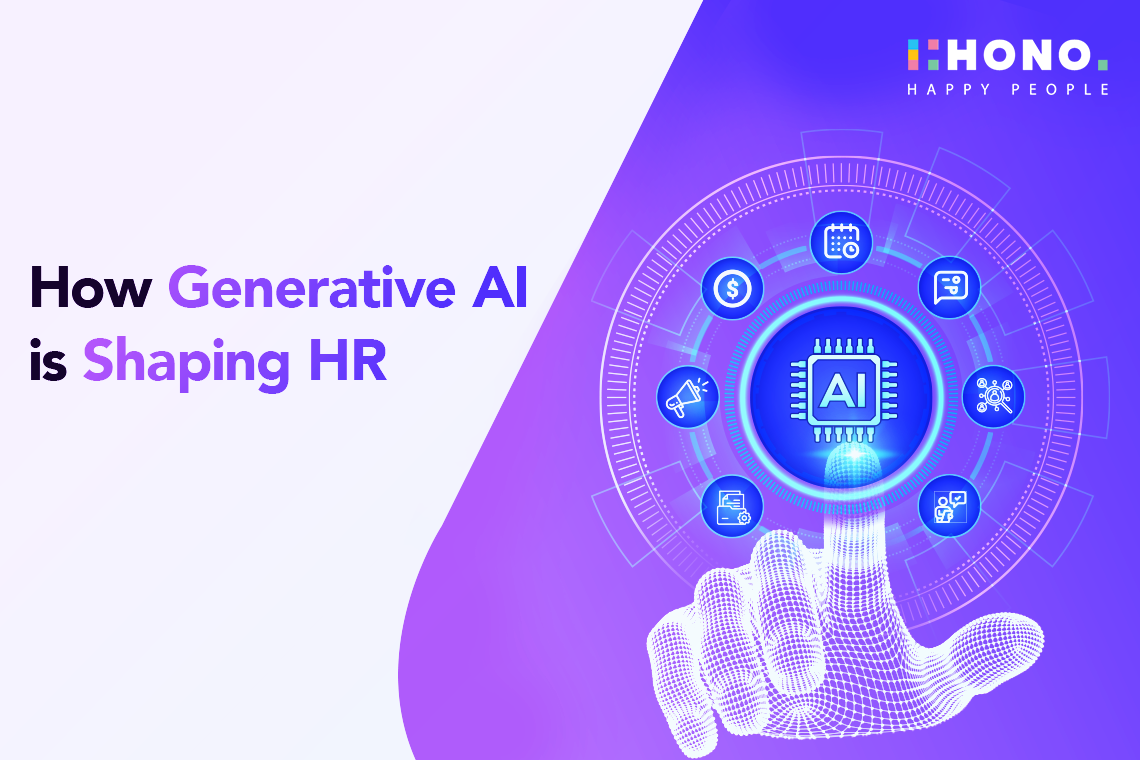- Gen AI
The role of AI in transforming business functions is becoming increasingly evident, and Human Resources (HR) is at the forefront of this change. By streamlining tasks, providing data-driven insights, and enhancing decision-making, AI is set to redefine how HR departments operate, making them more strategic and efficient. This blog offers a step-by-step guide to integrating AI into your HR processes effectively. From evaluating current practices to selecting the right AI tools and measuring their impact, we’ll guide you through each stage on how to use AI in HR, ensuring your HR department fully capitalizes on AI’s potential.
Step 1: Assess Current HR Processes
The first step in integrating AI into your HR department is to evaluate the current HR processes. Focus on identifying tasks that are repetitive, data-driven, and time-consuming, as these are the most suitable for AI enhancement. By automating these tasks, HR teams can shift their focus to more strategic activities. Examples of such tasks include resume screening, employee onboarding, and performance management, all of which can benefit significantly from AI's capabilities.
Gartner reports that 38% of HR leaders have already implemented AI solutions to streamline their operations, reflecting a growing trend toward automation in HR. This indicates that many organizations are recognizing the value of AI in improving efficiency and reducing manual workload.
According to research by OneReach, AI is particularly impactful in areas such as recruitment, where it can automate resume screening and candidate matching, reducing biases and enhancing decision-making speed. Additionally, AI can support performance management by providing initial insights from feedback, aiding in drafting performance reviews without replacing the human element of judgment. Employee engagement is another area where AI can shine, with chatbots providing real-time support and answering policy inquiries efficiently.  By carefully assessing your HR processes and identifying these key areas, you can set a strong foundation for successful AI integration.
By carefully assessing your HR processes and identifying these key areas, you can set a strong foundation for successful AI integration.
Step 2: Identify Use Cases for AI
To make the most of AI in your HR department, it's crucial to pinpoint where AI can bring the most value. This means identifying specific tasks that AI can automate or enhance. AI can significantly streamline recruitment by automating resume screening and matching candidates to job openings more effectively. This not only speeds up the hiring process but also helps reduce bias, making it fairer for all applicants.
In performance management, AI can analyze employee feedback and provide insights that help managers create more objective and personalized performance reviews. This makes the review process more data-driven, ensuring that evaluations are consistent and focused on development.
AI can also greatly improve employee engagement. For example, AI-powered chatbots can handle routine inquiries from employees, like questions about company policies or benefits. This not only provides quick responses to employees but also frees up HR staff to focus on more complex issues that require a human touch.
Step 3: Choose the Right AI Tools
Choosing the right AI tools is key to ensuring that they actually help your HR processes rather than complicate them. When selecting tools, look for those that can easily integrate with the systems you already use. Also, consider tools that offer generative AI capabilities, which can quickly synthesize information and provide insights—this is particularly useful in areas like drafting performance reviews or creating engagement plans.
Integration is another critical factor. The AI tools you choose should work well with your existing HR systems to ensure a smooth transition and to avoid creating additional work for your team. The goal is to enhance, not complicate, your current processes.
Step 4: Train HR Staff
Training your HR staff is essential to making AI work effectively in your department. Building their skills in data literacy and AI usage will ensure they can leverage these tools to their full potential. Setting up internal training programs can help your team become comfortable with AI, allowing them to confidently use the technology to improve HR processes.
Empowering your team through training also means they'll be more likely to embrace AI rather than resist it. When your staff understands how AI can help them do their jobs better, they'll be more motivated to integrate it into their daily workflows. 
Step 5: Implement AI Solutions
When you're ready to implement AI in your HR processes, it's best to start small. Roll out AI tools gradually, beginning with pilot programs in specific areas like recruitment or employee engagement. This allows you to gather feedback, make adjustments, and ensure the technology is working as intended before expanding its use across the department.
It's also important to keep a close eye on how these tools are performing. Collect feedback from your team and be ready to make changes based on what you learn. And remember, while AI can automate many tasks, it’s crucial to maintain a balance with human oversight, especially in sensitive areas that require empathy and understanding.
Step 6: Measure Success and Iterate
To see if AI is really making a difference, you need to track its impact. Set clear metrics for what success looks like—whether that’s faster hiring times, higher employee satisfaction, or cost savings. Regularly review these metrics to determine how well your AI tools are performing.
Based on the data you collect, be ready to make adjustments to optimize the AI’s performance. If the tools are working well, consider expanding their use to other parts of the HR function. This iterative approach ensures that AI continues to deliver value as your organization evolves.
Step 7: Build a Culture of Innovation
For AI to thrive in your HR department, it's important to cultivate a culture that embraces innovation. Encourage your team to continuously learn and experiment with new tools and processes. This will help them stay agile and responsive to the changing needs of the business.
Leadership plays a key role here. Support from the top is essential for driving change and ensuring that your HR team has the resources they need to explore new technologies. By fostering a culture of innovation, you can help your HR department stay ahead of the curve and continue to deliver value to the organization.  This approach is designed to help you integrate AI into your HR processes in a way that’s practical, effective, and aligned with your organization’s goals. By following these steps, you can leverage AI to make your HR department more efficient, strategic, and responsive to the needs of your employees.
This approach is designed to help you integrate AI into your HR processes in a way that’s practical, effective, and aligned with your organization’s goals. By following these steps, you can leverage AI to make your HR department more efficient, strategic, and responsive to the needs of your employees.
Key Takeaways and Actionable Steps
Understanding how to use AI in HR can be transformative, but it's essential to begin with small, focused applications. Start by testing AI tools in specific areas such as recruitment, performance management, or employee engagement. This approach allows you to iterate based on real-world results, ensuring a smooth transition as you scale AI initiatives across the organization. Gradual implementation not only maximizes benefits but also minimizes disruption, making AI a powerful asset in achieving your HR goals.
If you're seeking a comprehensive solution for integrating AI into your HR processes, HONO offers an advanced platform tailored to streamline HR management. With features like generative AI, predictive analytics, and a cloud-based system, HONO helps you seamlessly manage everything from recruitment to employee engagement. HONO’s platform automates routine tasks while providing deep insights that empower informed decision-making, ultimately boosting efficiency and enhancing employee satisfaction.
Discover more about how to use AI in HR with HONO's platform and take the first step towards a more innovative HR department by exploring our offerings.
Request a Demo Now!

.png?width=50&height=50&name=Team%20HONO%20logo-01%20(1).png)



